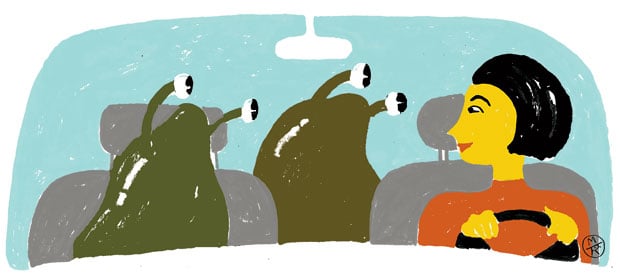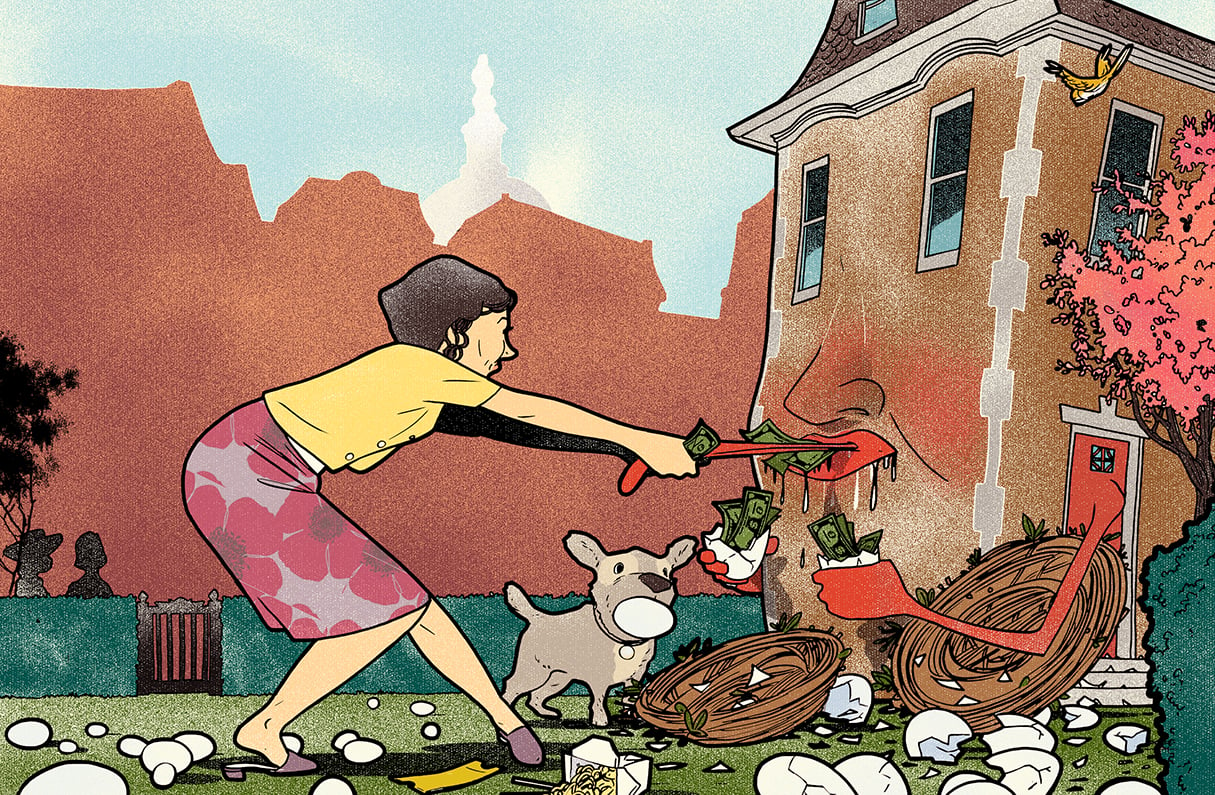“Ride to Pentagon?”
The question seemed innocuous, the woman with frizzy blond hair and pink lipstick asking it harmless. A free ride to the Pentagon? Why not? I’d been waiting 15 minutes for the bus already.
But as we zoom into the HOV-3 lane of I-395 toward DC, I suddenly find myself caught up in an insidious plot.
A killer is abducting young girls, breaking their bones, leaving them to die. He recounts the grisly details, his gravelly voice filling the car. I begin sweating, and my morning muffin churns in my stomach.
What did my mother tell me about not getting into cars with strangers? How stupid could I be? I’m trapped in someone else’s Avalon, hurtling toward God knows where. I don’t even know the driver’s name! I can only hope the police will figure it out after they find my body—
Suddenly, the audio book ends and the guy in the front passenger’s seat changes CDs. The Pentagon comes into view, and I exhale.
That was three years ago. I’ve been carpooling with strangers ever since. After the first harrowing ride with the audio-book driver, I got in line again and never looked back. Jumping into a stranger’s car—a practice called slugging—now seems as natural as getting on the bus.
Slugging is a way for drivers to use HOV-3 lanes in Virginia. They pick up riders, called slugs, in designated areas based on their destinations. Often the only words exchanged are the names of Metro stops (“Pentagon?”) or intersections (“18th and G?”).
Slug lines sprang up in Virginia and DC around 1975 in response to rising gas prices and construction of the country’s first HOV lanes along 395. Today there are at least 25 pickup locations, and some 10,000 people slug into and out of DC every day.
Why “slugs”? Legend has it that the term came from when Metrobuses took tokens. Bus drivers kept an eye out for riders trying to pass off fake tokens, called slugs. When impromptu carpool lines cropped up around bus stops, bus drivers learned to differentiate between bus riders and people waiting to catch car rides. They simply applied the same term to the “fake” riders, and slugs were born.
Slugging is cheaper for the driver, who spends less on gas, and for the rider, who might pay $5 to $10 a trip for public transportation. It’s more flexible than a bus or regular carpool—if you’re late, just ride with someone else. It’s also a chance to make connections; I found my mechanic on the recommendation of another slug.
A few unspoken rules: The slug shouldn’t talk unless the driver wants to, nor should she spend the ride talking on a cell phone or ask the driver to change the radio station.
What has made slugging such a success? First of all, the HOV-3 requirement—three is the magic number because you’re not alone with one person. And having a transit system in place is crucial: Riders need an alternative if no drivers show up.
What’s limiting slugging now is the size of the commuter lots. Expanding their number would increase the number of sluggers. In addition, more people likely would slug in the evening if HOV-3 lane restrictions were extended to 6:30 or 7 pm instead of 6.
When friends ask about safety, I point out the record of more than three decades of virtually crime-free slugging—unlike, say, the Metro. Slugging is an organized, polite, and longstanding tradition. In a city often divided by politics, it’s nice to find commuters sharing a common goal.
Melody Wilson (melodyawilson@gmail.com) is communications coordinator for the International Reporting Project.
This article appears in the August 2012 issue of The Washingtonian.



















